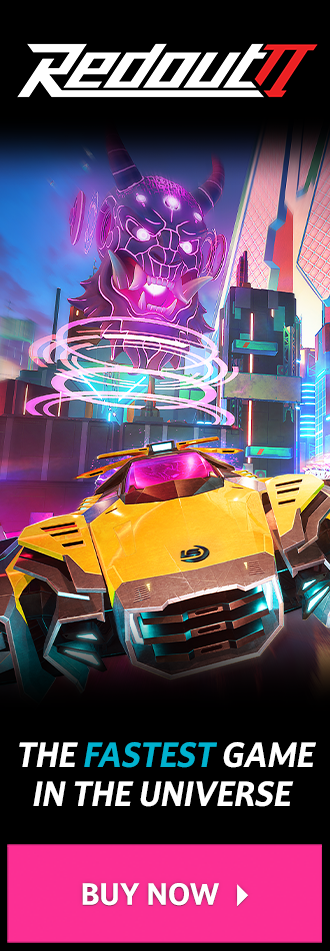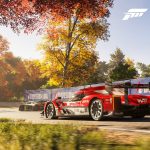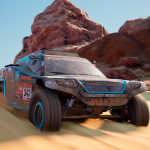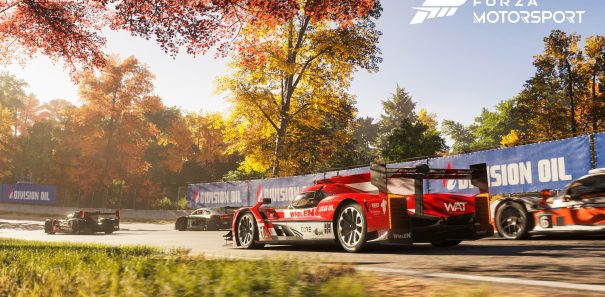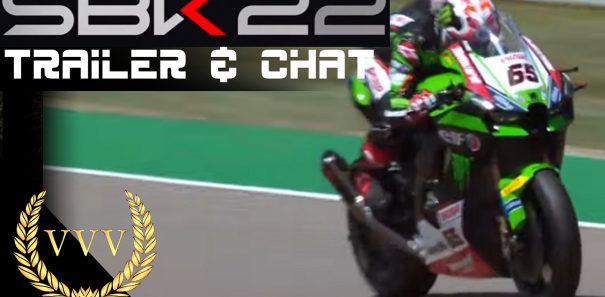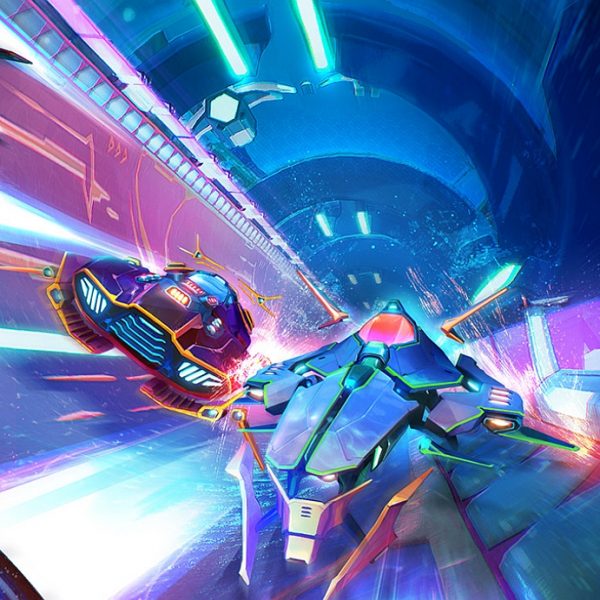Let’s get this out of the way: WRC 6 isn’t in the same league as the revered DiRT Rally. Such comparisons are inevitable, unfortunately, since Codemasters’ critically acclaimed passion project set the standard for rally games this year. For an annual series like WRC with tight development times, it’s a tough act to follow.
And yet returning developer Kylotonn Games make an admirable attempt to compete with Codemasters with WRC 6, their second game in the series following their takeover from Milestone’s four game reign.

Last year’s WRC 5 was a respectable debut from the French firm setting a solid foundation for the series, but, as our developer interview will attest, the team had to painstakingly create all assets from scratch in an incredibly short time – and the game suffered for it. The visuals were dated, the stage designs were unrealistic and the driving physics were underdeveloped. With WRC 6, however, Kylotonn has built on this foundation and improved just about every aspect with commendable diligence.
Rally evolved
DiRT Rally has its place in the genre, but its steep learning curve doesn’t appeal to everyone. WRC 6, on the other hand, utilises its license to set itself apart and appeal to a broader audience. This is best reflected in the accessible car handling: WRC 6 is by no means a hardcore simulation, but the physics stil havel enough depth to avoid comparisons with SEGA Rally to satisfy rally game veterans.
The floaty feeling of the handling in WRC 5 is gone: cars in WRC 6 feel far weightier, with a tangible sense of grip as your tyres tar through the gravel, snow and tarmac surface types, making them fun and intuitive to drive. The more predictable handling means you can apply the handbrake with confidence this time too: using the handbrake to hurtle around hairpins is supremely satisfying, just as it should be in a rally game. WRC 6 gets the balance between authentic realism and accessible fun just right.
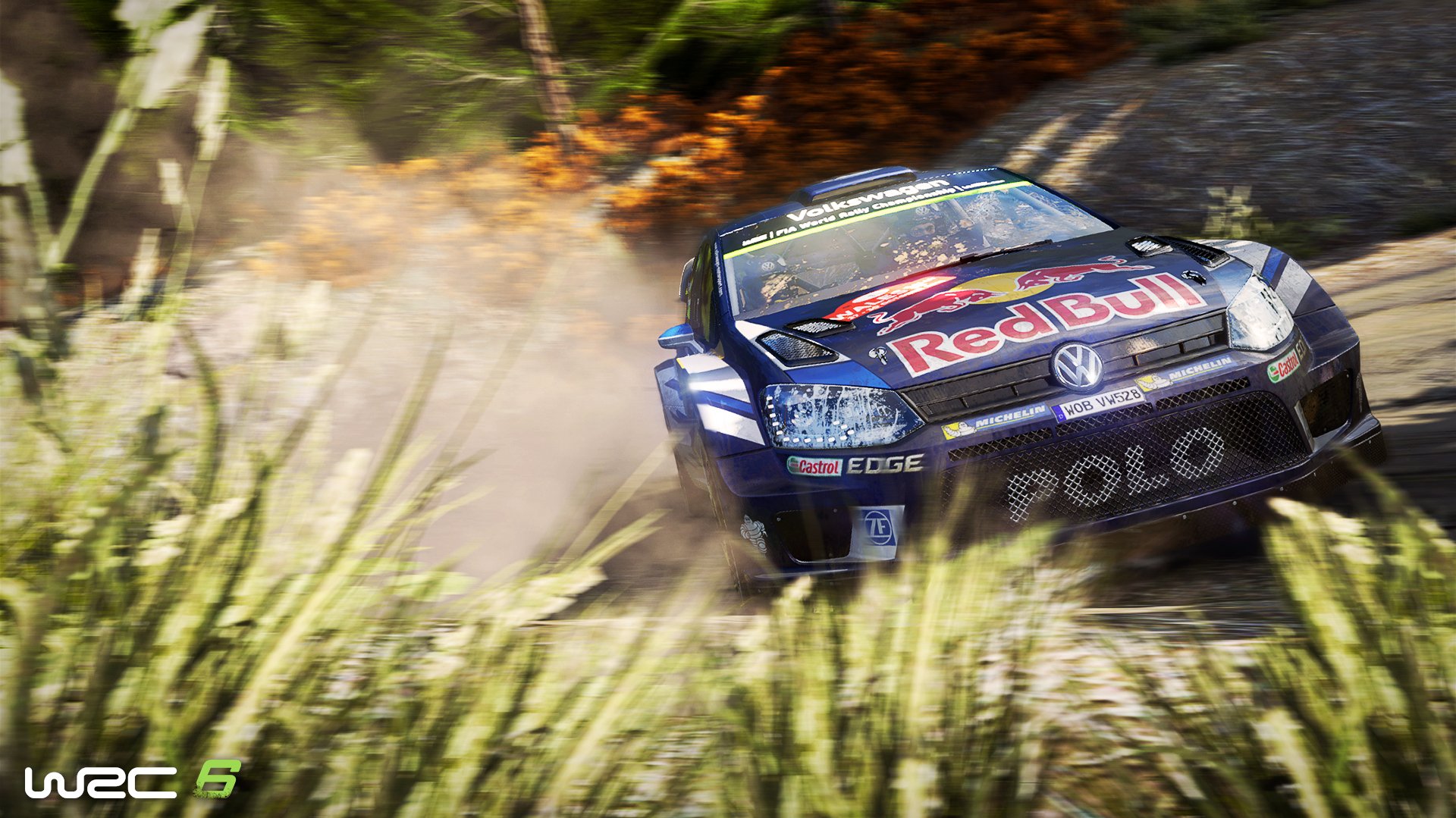
It’s a handling model that doesn’t apply particularly well to a wheel setup, however. While arguably the most enjoyable way to experience WRC 6 when you’re sliding around corners in opposite lock with a smile on your face, the flaky force feedback leaves a lot to be desired: bumps in the terrain do register, but you don’t get enough sense of how your traction is being affected by the surface. The force feedback is also too ferocious by default, so I recommend turning it down. It’s clear that WRC 6 is designed to be played primarily on a pad as the cars seemed more responsive, which may aggravate seasoned sim racers.
WRC 6 is more welcoming to newcomers than its hardcore competitors. Last year’s Rally School (which turned a lot of players off with its difficulty spike) has been replaced with a short introductory stage that teaches you the basics, before a short questionnaire about your experience and a Driving Test which recommends the difficulty settings you should apply after analysing your performance. It’s a useful inclusion to help you save time setting up, but some more advanced guidance about rally driving techniques would have been helpful for less-experienced players. It would also help if the game remembered your recommended settings when you start a career.
There are of course a range of difficulty settings you can apply to suit your skill level, but playing with the easiest setting and applying stability control is more of a hindrance as it constantly corrects the car when you make small steering adjustments. Even with the handling set to the highest ‘Simulation’ setting, which provides a more natural level of control, WRC 6 is a forgiving driving experience you can pick up and play.
If the accessible driving doesn’t give you enough challenge, the revamped stages certainly will. WRC 5’s stages were too wide, flat and easy to cut, but that’s no longer the case in WRC 6: they’re longer and narrower, with realistic camber and trackside obstacles such as rocks and trees to avoid and dips at the edge of the road to prevent you from cutting corners. When you’re whizzing past obstacles at 100 mph with inches to spare, it all adds to the sense of speed and danger which was lacking in WRC 5 – especially when you apply weather effects and night time of day.
Indeed, you often need to be cautious when navigating WRC 6’s stages. The slightest clip can potentially flip your car onto its roof and cost you the rally – especially as there are none of the rewind safety nets you may be accustomed to from other rally games. You can’t rely on restarts either, as you only get a limited number of retrys in the career mode. While the stages weren’t meticulously scanned and are shorter than their real life counterparts with only six stages per location on average, there are enough recogniseable landmarks that stay faithful to each location and more than twice the number of locations in DiRT Rally. My only gripe is that high speed straights seem to be a rarity in most locations.
WRC 6 is notable for being the first game in the series developed exclusively for current-gen platforms, and it shows – the visuals are a significant step up from WRC 5’s decidedly dated look.
Put the two games side-by-side, and the difference is abundantly clear. WRC 6 sports a grittier, more realistic colour palette in contrast to the oversaturated look of WRC 5, along with more detailed textures, a greater variety of vegetation and denser foliage that make the environments look more realistic. Car models are impeccably detailed, particularly when you examine them up close in the menus, and have been remodelled for better accuracy in some cases. WRC 6 still lacks the fidelity we’ve seen in other racing games generation, but it’s not a bad looking game – it’s just not a stunning one.
On shaky ground
Unfortunately, technical issues take the shine off the otherwise improved visuals. Occassional screen tearing and texture pop-in is distracting, but it’s the inconsistant frame rate that’s the worst offender: some stages run smoothly without a hitch, yet others suffer from severe slowdown. It’s not glaring enough to make the game unplayable, but it is noticeable when the game constantly chugs along at a variable frame rate – especially when DiRT Rally outclasses it with a solid 60fps performance.

A locked frame rate would have been a far better option, even at 30fps. Patches will hopefully smooth things out soon, but for now the PC version is the platform of choice if frame rate matters to you, although the PlayStation 4 Pro is said to offer performance improvements as well. WRC 6 also seems unoptimised: there were many times when the fans inside my PlayStation 4 were working in overdrive under the strain, which is peculiar as you wouldn’t expect the graphics to be stretching the hardware to its limits.
Audio-wise, the engine notes in WRC 6 lack the raspy roars you’d expect to hear from a rally car that were captured so masterfully in DiRT Rally, but they do sound more aggressive than the whiny engine sounds in WRC 5, with enough distinction between the various viewpoints whether you drive with the chase or cockpit camera (you also get manual control of the headlights and windscreen wipers in the cockpit view which is a nice touch). Environmental sound effects could be more defined, but subtle effects of stones chipping away at the bodywork and cheering crowds do add to the atmosphere.
WRC 6’s co-driver still sounds too robotic, however, calling out commands cobbled-together like a sat-nav. The accuracy of the pacenotes has been improved thanks to the input of Junior WRC champion

The career mode in WRC 6 isn’t a radical departure from last year’s game, but there have been some tweaks to make it more authentic. As before, you participate in seasons working your way up from the slower Junior WRC class to the more demanding WRC 2 and WRC classes. You can now sign up to multi-year contracts, and the attitudes of each team varies drastically which influences your objectives and team morale: some will reward drivers who consistently reach the podium at all costs, whereas others will encourage a more considered approach to keep the car as pristine as possible to prevent mechanics working overtime.
Finishing a stage unscathed is no easy task, however. The damage modelling in WRC 6 has been enhanced with panels that now deform dynamically, and your car is more susceptible to mechanical failures which has a noticable affect on the handling: hard landings from jumps can damage the suspension, while severe knocks can affect the gearbox or damage the electronics.
In a nice touch, it’s also possible to puncture a tyre during a stage, leaving you with the dilemma of stopping to make repairs at the cost of a hefty 30 second time penalty or nurse your crippled car to the finish line to preserve those precious seconds on your time. As before, making repairs between stages takes off time from your 45 minute allowance, or you can make automatic repairs which stay within your limit. It works well, ensuring that you don’t spend too much time sifting through endless menus in the career.
The career could do with some live action footage of the WRC for extra fan service, and the replays could also do with some more TV-style camera angles (I particularly like the overhead helicopter camera that showcases the scale of the environments, though), but this is still a respectfully realistic representation of the WRC. All 14 locations of the 2016 WRC calendar are included, from the trecherous mountain roads of Monte Carlo to the fearsome forests of Finland, along with all the teams and drivers across every discipline – unlike the F1 games, you get a complete overview of the WRC championship and its entry-level WRC 2 and Junior WRC championships.

Super Special Stages are the true standouts, however. Last seen in Milestone’s WRC 3, Super Special Stages are a welcome return to the series taking place on purpose-built tracks often set in cities. Unlike the special stages, the Super Special Stages are 1:1 recreations of the real thing, with extremely tight, technical circuits that have you weaving around obstacles often head-to-head with another driver. They’re terrific fun and will test your driving skill much like the Monza Rally in Valentino Rossi: The Game, but short enough not to outstay their welcome.
The Rally China also makes its WRC game debut, despite being cancelled this year due to weather damage when it was set to feature in the championship for the first time since 1999. Its inclusion fulfils WRC 6’s back-of-the-box checklist of new features, but the bland and barren mountain roads look uninspired compared to other locations and there are only three special stages, making it a very forgettable location.
It’s the smaller details in the presentation that elevate the authenticity, however, from seeing your crew at work in the interactive service park in-between stages and podium celebration cut scenes, to the low-flying helicopters and trackside camera crews filming each rally.
You also now see competitors drive off ahead of you at the start of each rally before your car pulls up behind on the grid, which reduces the sense of isolation you get in most rally games – a seemingly minor, but authentic detail that rally fans will appreciate.
There still aren’t any true staggered starts, though, so you can’t catch up with your opponents which is a shame. To my surprise, though, you’ll occasionally see stricken cars at the side of the road caught up in an accident. This reminds me of Evolution Studios’ underrated WRC Rally Evolved on the PS2 released some ten years ago, although Evolution’s effort went the extra mile facing you with random events, from fallen rocks to animals crossing the road. As with the real-life WRC, incidents like these can affect your position in the championship if you’re struggling, adding an extra layer of unpredictability and realism to the career.
Without other disciplines such as Rallycross and Hillclimb events to expand the experience, the one-note career does become samey after a while, but the variety of locations and driving conditions keeps you invested, while team objectives give you a good sense of progression along with an in-game achievement system that acknowledges your accomplishes separately to PlayStation trophies and Xbox achievements to keep completists busy.
Second place
It’s a shame the car selection is so sparse. To be fair, it’s not entirely the fault of the developers: this year’s team line-up isn’t the most exciting to ever grace the WRC, leaving you with a handful of humble hatchbacks from Citroen, Peugeot, Ford, Skoda and Hyundai with similar driving characteristics.
Star cars such as the Subaru Impreza WRX WRC 2 which appeared in last year’s game have had to be removed since they withdrew from the competition this year. The absence of the Mitsubishi Lancer Evolution X is unexplained, however, since it’s competing in this year’s WRC 2 championship driven by Alain Foulon and Jim Van den Heuvel.

Of course, being an officially licensed WRC game comes with limitations, and WRC 6 pales in comparison to the comprehensive car lists in DiRT Rally and Sebastien Loeb Rally EVO which cover several decades of rallying. Consequently, iconic cars likes the Lancia Stratos are sorely missing in WRC 6. It’s disappointing, because classic rally cars have appeared in Milestone’s early WRC games, but licensing issues have obviously prevailed.
Online multiplayer is barebones but rewarding because the competitive nature of rallying where every second counts is well-suited to online play. You compete with simultaneous live ghost players to set the fastest time which makes for some intense matches, although I did often find it difficult to find any open lobbies. It’s the weekly Shakedown events that will keep you coming back however, with regular novelty challenges including a survival stage with the handbrake disabled.
eSport championships return following their success in WRC 5, and unlike last year’s game it’s open to everyone in WRC 6, adding considerable longevity to committed players. There’s competitive local multiplayer too, with split-screen featuring for the first time in the series harkening back to Colin McRae Rally 2.0’s heated sofa duels with surprisingly little compromise to the visuals.
WRC 6 finishes second place to DiRT Rally when it comes to presentation, physics and exhilaration – but that doesn’t mean you should ignore it. The well-designed stages and playful handling model make WRC 6 a thoroughly enjoyable rally game in its own right that’s more approachable than its simulation-focused competitors, with a breadth of licensed content that can’t be matched.
Above all, WRC 6 has clearly been developed by a passionate team that has listened to their fanbase and actively responded to the criticisms aimed at WRC 5. Performance issues unfortunately let WRC 6 down, but, given its short development time, Kylotonn has made significant strides in taking the WRC series to new heights with improvements across the board. WRC 6 is a markedly better game than its predecessor and the best WRC game in years.
Our Review
Summary
WRC 6 has clearly been developed by a passionate team that has listened to their fanbase and actively responded to the criticisms aimed at WRC 5. Performance issues unfortunately let WRC 6 down, but, given its short development time, Kylotonn has made significant strides in taking the WRC series to new heights with improvements across the board. WRC 6 is a markedly better game than its predecessor and the best WRC game in years.



